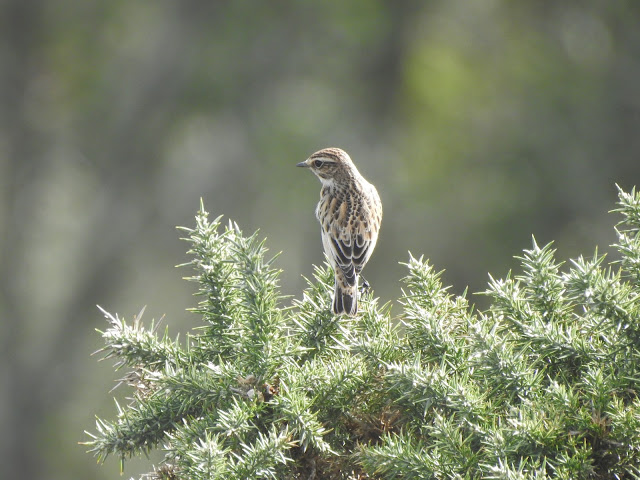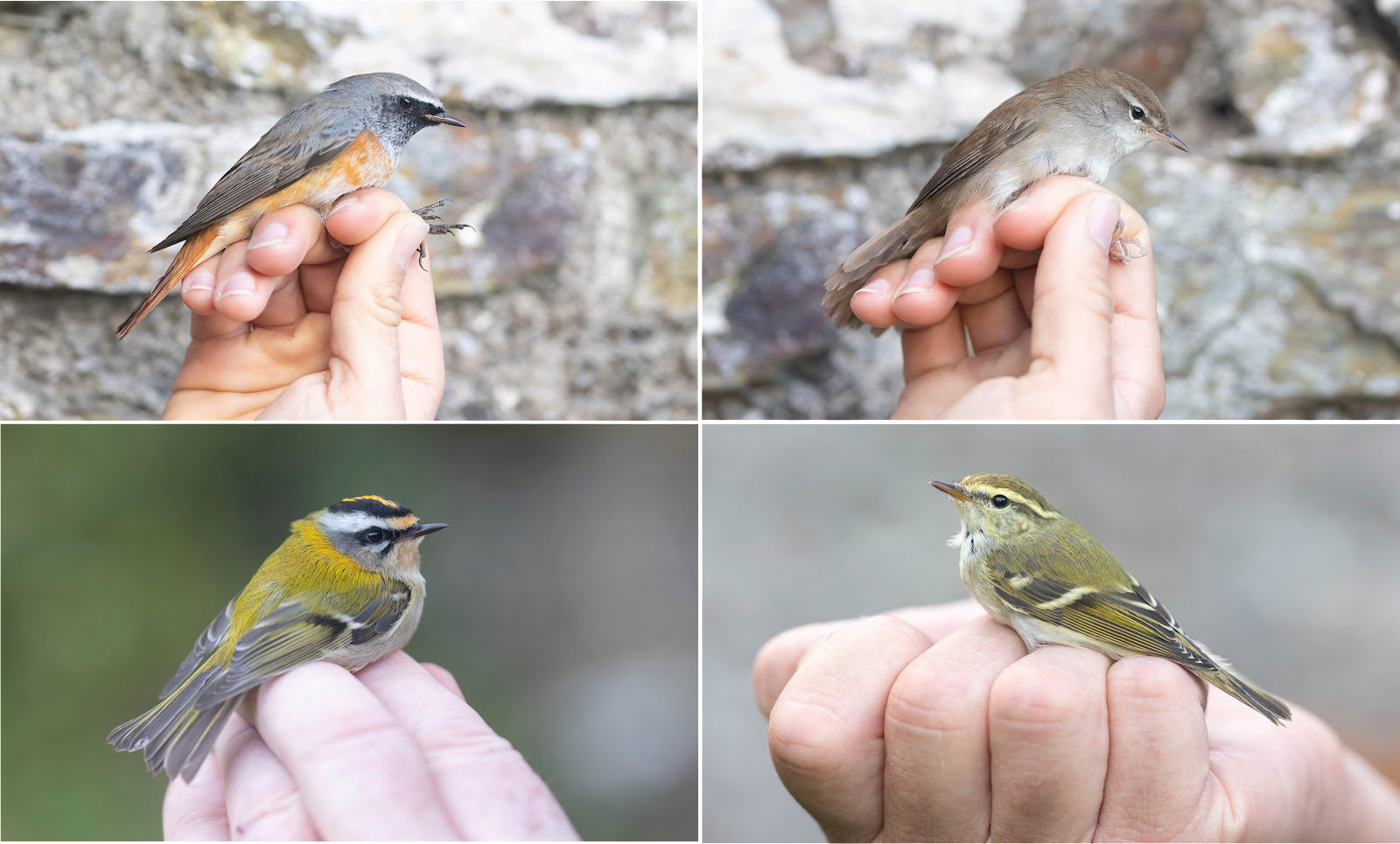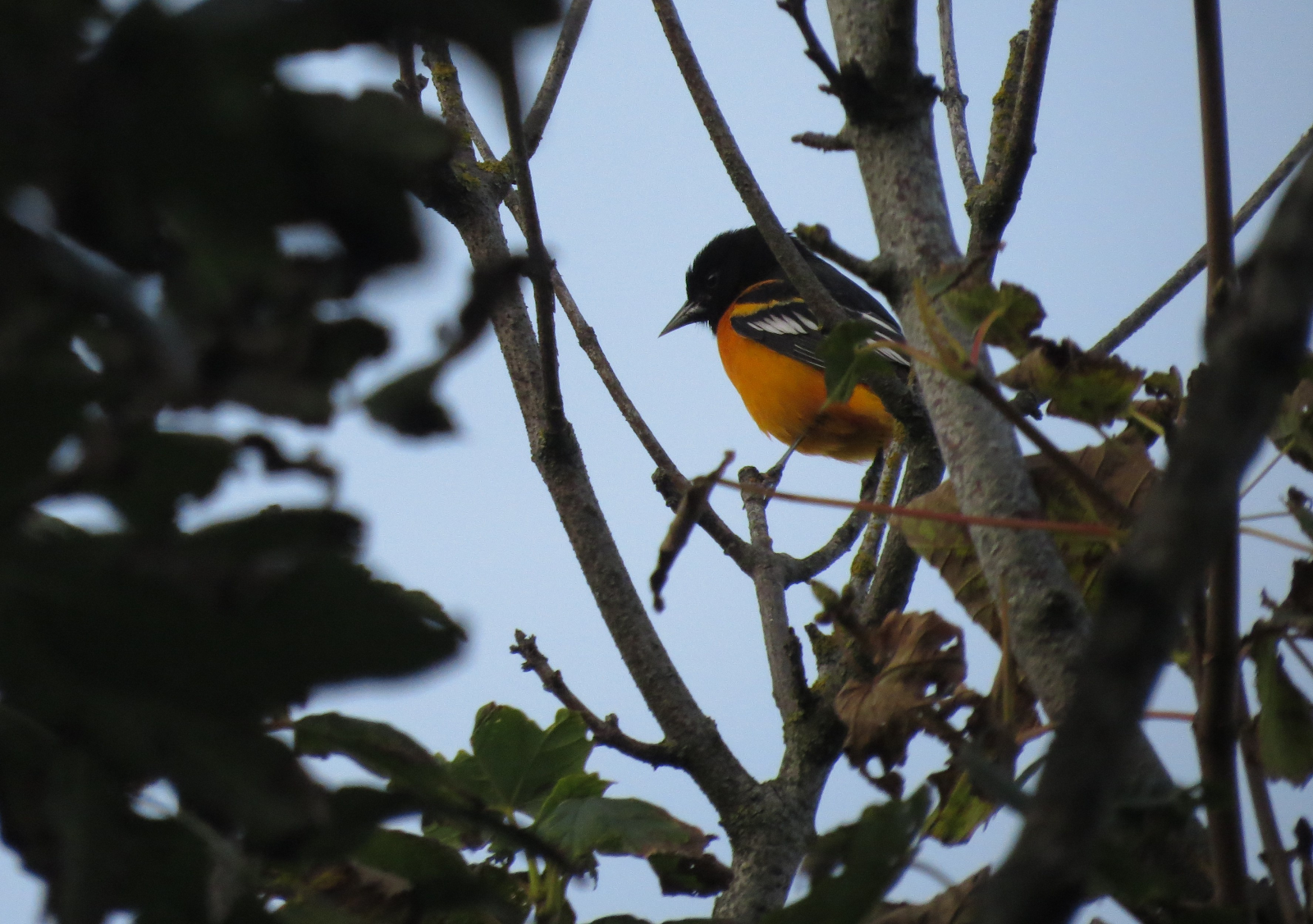Angus recalls the sightings on his last week on the island. Unfortunately we said goodbye to both of our autumn volunteers as the last boat of the season left the island on Friday 28th October. Tom and Angus have seen some fantastic birds as well as helped us out by completing the yearly seal pup surveys.
A mild week typically
with moderate to strong south or
south-westerly winds.
The Wigeon has
remained at Pondsbury all through this week and was sometimes accompanied by up
to two Teal. Up to three Water Rail are still heard on a daily basis in Millcombe Valley. Two Grey Herons flew over the south of the island on the 24th and another
was harassed by Ravens over
Benjamin’s Chair on the 29th.
Compared to last week, this week was far quieter for wader
records. The high count for Oystercatchers
around the coast was 18. One Golden Plover was recorded calling on the 24th.
Single Woodcock have been seen
separately on three occasions though, the 25th, 26th and 29th adding a bit more
diversity. Six Snipe have been seen
in total this week.
Several hundred Kittiwake
have been recorded out to sea on most days, with the peak count of 1000+ on 29th.
A few Common Gulls featured among the flocks towards the end of the week and a
single Mediterranean Gull. A handful of Lesser
Black-backed Gulls continue to be recorded most days, but never more than
four this week (on the 29th). One Arctic
Skua was seen off the east coast on
the 26th. The highest count of auk spp. Was 652 on the 28th. Five Manx Shearwater were seen on the 26th. Highest Gannet count was also on the very windy 26th with 150 birds. A Storm Petrel sp. was seen far
off the east coast by Chris Baillie on the 30th.
The second ringtail Hen
Harrier of last week has stayed with
us on the island, favouring the heathland north of Quarter Wall. It is
occasionally seen hunting but is generally very elusive. The strong winds
sometimes keep it hunkered down in the vegetated gullies near Gannets Coombe.
Peak counts of Sparrowhawk and Kestrel remain at three as has been
typical this month, and a Merlin has
been seen most days. Like the Wigeon
and Hen Harrier, the single Jackdaw
has outstayed our expectations, also remaining for the week, still sticking to
the easterly fields south of Quarter Wall (Tillage, Brick and Barton’s). Another
increase in Carrion Crow has been noted, with up to 31
roosting in the top of Millcombe.
 |
| Hen Harrier, East Coast © Angus Croudace |
The ringed Willow
Warbler has been seen a few more
times near Quarter Wall up until the 28th, and a second was also seen on the 25th.
Chiffchaff counts have numbered
between four and six birds all week. Blackcap
counts have been in the single figures apart from 20 on the 24th. Two Firecrests were seen on the 24th, with
one bird also recorded on the 25th and 27th. There was an influx of Goldcrest on the 24th, with 26 recorded
for the first two days this week and then 41 on the 26th. One more late Whinchat was recorded on the 24th on
the morning census at Quarter Wall.
Several Ring Ouzels are seen on the east coast most
days with a couple of nice males often found around the Terrace. Song Thrush numbers are similar although sightings are distributed
between Ackland’s Moor and Millcombe. Blackbird
numbers have halved this week, falling from high teens to single figure counts.
Fieldfare counts started with about
120 birds at the start at the week and was quickly down to 40 midweek which has
remained consistent. Redwing have
been more variable with some days just a couple of birds recorded, and others
32 (24th), 90 (27th) and 67 (29th) birds seen. One Mistle Thrush was seen
on the 24th. Up to three Black Redstart have been seen, with sightings
every day this week.
After 12 Pied/White
Wagtails on the 24th here has been minimal passage of wagtails with between
one and four birds 25-28th and then seven birds including one Grey Wagtail on the 29th.
One Brambling was
seen among a flock of Chaffinches in
Barton’s Field, and later by the Lambing Shed on the 24th and two more were
picked up on the 27th. Chaffinch counts
started the week at 139 on the 24th but bigger movements midweek resulted in
totals of 594 and 550 on the 27th and 28th respectively, with 222 on the 29th.
More than 70 Siskins were recorded
on the 25th and 27th, with lower counts on other days not exceeding the teens. Goldfinch counts have remained low at
just a couple most days. A small resurgence of Linnets, mainly from a couple of larger flocks moving through
numbered 22 on the 24th and 35 on the 25th.
One bird a day fills out the rest of the row this week, with the
exception of the 29th, where there was neither a Linnet nor a single Goldfinch
recorded! Two Lesser Redpoll singles were recorded on the 24th
and 25th. One Snow Bunting was seen on a few occasions in
the first half of this week.
The windy week has been scattered with a few highlights,
starting with a Little Bunting on the 24th, which was heard
and tracked down by Paul Holt shortly after sunrise but never showed for any of
the other birders on the island despite thorough searches of Millcombe. The Bullfinch was also heard calling in
Millcombe again on the 24th. A Yellow-browed
Warbler was picked up by Government on the 25th. On the 27th Chris Baillie
discovered a Red-breasted Flycatcher
in the Blackthorn at the top of Millcombe. It was not a particularly showy
individual and behaved similarly to the rest of this season’s rarities; teasing
and then upping and leaving before the day is out. A Richard’s Pipit was flushed near to Tibbetts in the morning on the
27th. An exciting record for Lundy of a Booted/Syke’s
Warbler on the Terrace was picked up by Stuart on the 29th but despite many
hours of searching unfortunately the bird was never relocated, and no
photographs were obtained.
 |
| Little Bunting, Millcombe © Paul Holt |
 |
| Red-breasted Flycatcher, Millcombe © Stuart Cossey |
After a lull for a week or two in the moth trap, the calm
night of the 28th gave us a Convolvulus
Hawk-moth and the island’s second
record of Olive Tree Pearl Palpita vitrealis.
 |
| Convolvulus Hawk-moth © Stuart Cossey |
Contributors: Stuart Cossey, Rosie Ellis, Angus Croudace, Tom Wright, Paul Holt, Chris Baillie






















